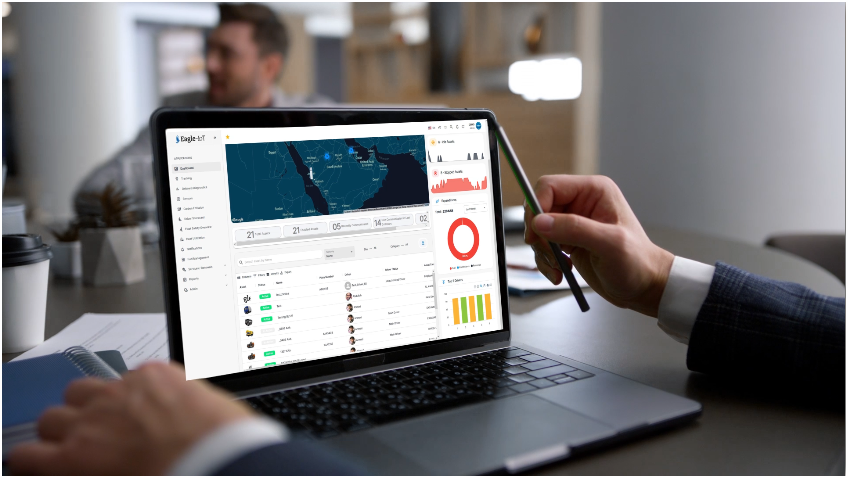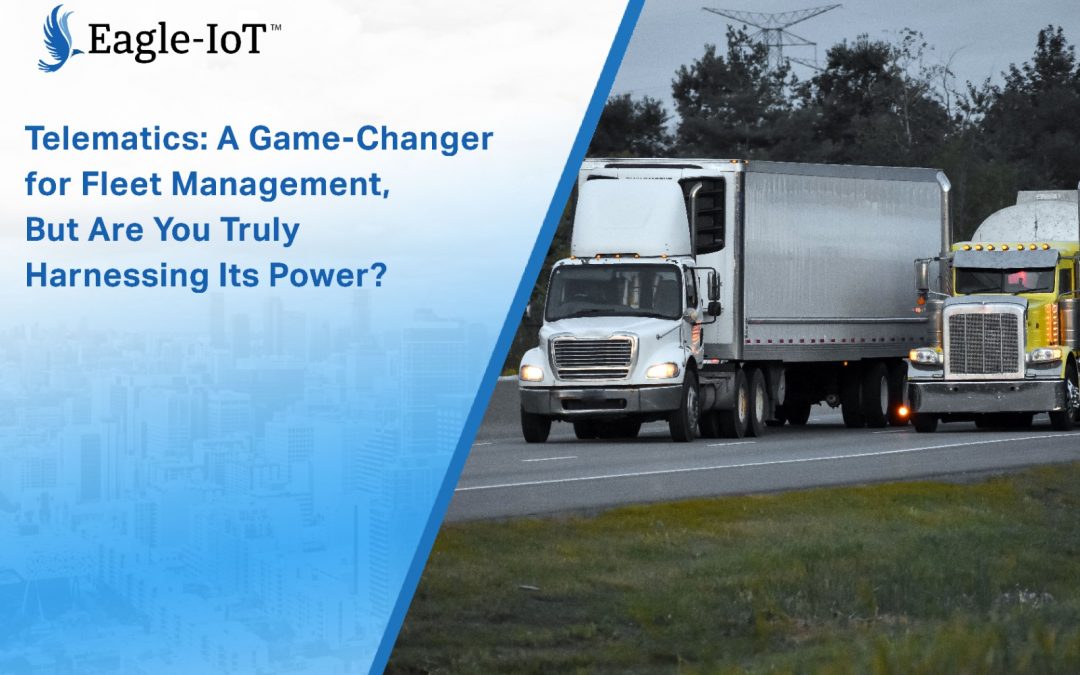Telematics has revolutionized fleet management, becoming the go-to technology for businesses that want to maximize operational efficiency, reduce costs, and enhance safety. But while many fleet operators have integrated telematics systems, few are truly leveraging its full potential. For fleet managers, it’s essential to recognize that telematics can do more than provide location data; it can drive critical business decisions and serve as a transformative tool for competitive advantage.
Understanding Telematics in Fleet Management
At its core, telematics refers to the integration of telecommunications with vehicle information technology, enabling real-time data transmission. It tracks vehicles using GPS, monitors driver behavior, and collects data on engine performance and fuel consumption

While many fleet operators use telematics primarily to track location or monitor fuel efficiency, the technology can go far beyond these basic capabilities. The true value of telematics lies in its ability to generate actionable insights, optimize fleet performance, and support business strategy.
But as telematics systems evolve, the challenge is to ensure that the business fully exploits these functionalities.

The Advanced Power of Telematics: Beyond GPS and Fuel Tracking
Modern telematics systems are capable of so much more than basic vehicle tracking. Here are some advanced areas that can redefine how fleet management operates:
1. Predictive Maintenance and Asset Management
Vehicle downtime is one of the most significant challenges in fleet management. Traditional preventive maintenance schedules are based on assumptions and generalized estimates, which often result in either over-maintenance or unexpected breakdowns. Telematics, when integrated with advanced diagnostics systems, provides real-time data on vehicle performance, including engine health, brake wear, tire pressure, and other critical components.
Through predictive analytics, telematics can forecast maintenance needs based on actual vehicle use and performance data, minimizing unexpected breakdowns and reducing the overall cost of repairs. For businesses It is an opportunity to reduce CAPEX by extending vehicle lifecycles and optimizing asset utilization.
2. Driver Behavior Analysis and Safety Improvements
One of the most underutilized aspects of telematics is its ability to monitor and improve driver behavior. Harsh braking, rapid acceleration, excessive idling, and speeding not only increase fuel consumption but also elevate the risk of accidents. Advanced telematics systems provide real-time alerts and detailed reports on driver performance, enabling fleet managers to identify risky behavior patterns.

Moreover, integrating telematics data with advanced algorithms can help businesses predict accident risks and improve driver safety programs. For executives, enhancing safety not only reduces liability and insurance costs but also strengthens the company’s reputation for responsible fleet management.
3. Advanced Route Optimization for Increased Efficienc
Traditional route planning often overlooks critical variables such as real-time traffic conditions, weather disruptions, and the actual status of assets. With telematics, businesses can move beyond static routing and employ dynamic route optimization. Real-time data allows dispatchers to adjust routes based on current conditions, ensuring faster deliveries, improved fuel efficiency, and reduced wear on vehicles.
Telematics systems can also be integrated with external data sources like traffic information and weather reports, ensuring that fleets always take the most efficient routes. Eagle-IoT offers a comprehensive telematics solution which allows fleets to make more informed routing decisions and avoid delays due to adverse weather conditions or traffic congestion.
4. Fuel Efficiency and Carbon Emissions Reduction
Fuel management is a major cost factor in fleet operations, and telematics systems offer advanced tools to control this expenditure. By monitoring fuel usage in real-time, fleet managers can quickly identify inefficiencies, such as excessive idling or poor route choices. However, this step can be taken further by integrating telematics data with fuel analytics software to predict fuel consumption patterns and automate fuel purchasing decisions when prices are most favorable.
Additionally, reducing fuel consumption through smarter fleet management contributes directly to sustainability goals. Advanced telematics solutions such as Eagle-IoT also offers carbon emissions tracking, allowing companies to measure and mitigate their environmental impact—something that’s increasingly critical as environmental regulations tighten.
How To Ensure Maximizing Telematics Value
While the potential of telematics is immense, many companies fall short of fully leveraging this technology. The key issue often lies not in the technology itself, but in how it’s integrated into
broader business processes. Here are a few strategic considerations to ensure telematics system delivers maximum value
· Align Telematics with Business Goals
Telematics is not just a fleet management tool; it’s a data-driven solution that can serve broader business objectives. It’s critical to align telematics capabilities with overall business goals, whether that’s improving customer service, cutting operational costs, or supporting sustainability initiatives. For instance, if reducing carbon emissions is a priority, fuel and emissions monitoring features should be at the forefront of your telematics strategy.
By treating telematics as a component of digital transformation rather than just a fleet tool, companies can extract more value and ensure that it contributes to long-term business outcomes.
Data Integration and Analytics
Telematics generates vast amounts of data, but data alone is not valuable without the right analytical tools. Companies must integrate telematics data with existing enterprise resource planning (ERP) systems, customer relationship management (CRM) platforms, and advanced analytics tools to gain comprehensive insights into their operations.
For example, integrating telematics data with predictive analytics platforms can enable more sophisticated forecasting, from predicting vehicle maintenance needs to optimizing inventory levels based on fleet availability. This level of integration ensures that telematics data isn’t siloed but instead informs business-wide decision-making.

· Invest in Training and Change Management
One of the common pitfalls in adopting advanced technologies is failing to adequately prepare teams to use them. Telematics is no exception. While the technology offers numerous benefits, its success ultimately depends on how well employees, especially fleet managers and drivers, can leverage it.
Companies must ensure that there is a comprehensive training program in place that educates key stakeholders on how to use telematics data effectively. Additionally, a change management plan should be implemented to address any resistance to new processes, ensuring smooth adoption and long-term success.

Leverage Machine Learning and AI for Predictive Insights
The future of telematics lies in artificial intelligence (AI) and machine learning (ML). These technologies are becoming increasingly integrated into telematics platforms to offer predictive insights, automate processes, and enhance decision-making. AI can analyze vast datasets collected by telematics systems to predict vehicle breakdowns, optimize fuel usage, and even recommend driver coaching based on behavior patterns.
The Future of Telematics in Fleet Management
Telematics technology is advancing rapidly, and those businesses that stay at the forefront of this evolution will reap the greatest rewards. Future innovations will likely focus on even greater integration of AI, predictive analytics, and IoT capabilities. We can expect smarter automation of fleet management tasks, improved safety measures, and more comprehensive data integration across enterprise systems.
The challenge is clear: understanding the full scope of telematics, ensuring it aligns with business objectives, and leading the charge in leveraging its capabilities.
Are You Truly Harnessing the Power of Telematics?
Telematics is not just a tool; it’s a transformative force that can redefine how businesses manage their fleets. But to truly harness its power, organizations must go beyond basic tracking and fuel management and integrate telematics into their broader operational and strategic goals. Senior leadership needs to focus on advanced telematics functionalities, invest in data integration, and embrace AI-driven insights.
The real question isn’t whether telematics is a game-changer—it undoubtedly is. The question is: Are you leveraging it to its full potential?


